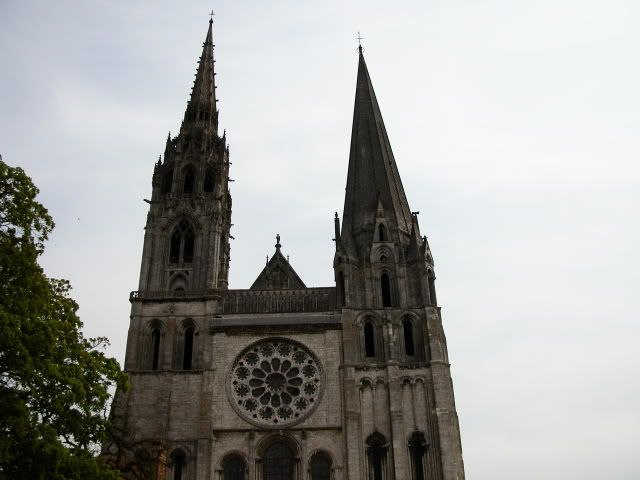 This size discrepency comes from the two unique periods in which each tour was created. Pictured on the left, the Gothic tower was completed in the year 1513. The older octagonal tower on the right dates from the late twelfth century, and although a bit shorter than its Gothic counterpart, it is the tallest Romanesque tower still standing. This wall and tower are the only surviving external examples of the cathedral's Romaneque manifestation dating from 1020. The somewhat fateful history of Chartes Cathedral includes an early cathedral created in the fourth century, followed by a Merovingian sanctuary in 743 that was destroyed by Hunald, Duke of Aquitaine. A new cathedral was built, and then destroyed again in 858 by Vikings. A few years later, a Carolingian cathedral was built over the same site, only to be destroyed by fire in 1020, and as a result the Romanesque construction began. The present cathedral, so influencial during the days of French Gothic style, began in 1194 after yet another fire destroyed most of the Romanesaue cathedral.
This size discrepency comes from the two unique periods in which each tour was created. Pictured on the left, the Gothic tower was completed in the year 1513. The older octagonal tower on the right dates from the late twelfth century, and although a bit shorter than its Gothic counterpart, it is the tallest Romanesque tower still standing. This wall and tower are the only surviving external examples of the cathedral's Romaneque manifestation dating from 1020. The somewhat fateful history of Chartes Cathedral includes an early cathedral created in the fourth century, followed by a Merovingian sanctuary in 743 that was destroyed by Hunald, Duke of Aquitaine. A new cathedral was built, and then destroyed again in 858 by Vikings. A few years later, a Carolingian cathedral was built over the same site, only to be destroyed by fire in 1020, and as a result the Romanesque construction began. The present cathedral, so influencial during the days of French Gothic style, began in 1194 after yet another fire destroyed most of the Romanesaue cathedral. Throughout the ages, Chartres remained an important center of religious pilgrimage due to its Mary relic known as the Sancta Camisia, or veil of the Virgin. In 876 a cloth believed to have been worn by the Virgin Mary was given to the cathedral by Charles the Bald (King of the Franks) to help finance construction efforts. Charles had inherited the cloth from his grandfather Charlemagne, who originally received it as a gift in 800 from the Empress Irene of Byzantium. In 1712 the reliquary housing the cloth was unsealed and a long piece of silk about ten feet in length was discovered (previously it was believed to be a garment). During the 20th century the fabric was examined and found to date from the first century via Syria or Palestine. Contemporary studies note that this same type of fabric is found in Palestine today, used by women to cover themselves and to wrap their babies.
Only two fragments survived the French Revolution and one is housed in the left-hand nave of the Cathedral. The other piece remains underground in the crypt. During my visit, I witnessed more than one pilgrimage in process. In fact, it was difficult to get a good look at the Mary relic because several nuns in reverant worship were crying and kissing the floor in front of it.
One of my personal favorites of the day was a visit to the black Virgin of the Pillar chapel.
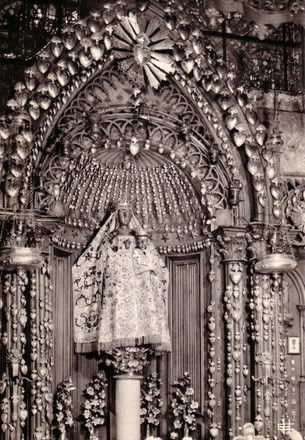
Chartes is also known of course, for its magnificent stained glass that illustrates 150 biblical stories in what we might consider a multi-media teaching center of the Middle Ages. During both World Wars the windows were dismantled piece by piece for safety, and restoration has been ongoing since the 1970s. The Cathedral is also well known for its labyrinth, which is easy to miss if you're busy gazing upward like I was. A peek at your shoes is definitely worth it when you uncover the 13th century maze inlaid in the nave floor. Pilgrims used to follow this route on their knees, but I'm not too fond of penance, so I remained standing. There are eleven bands of concentric circles, that measure 851 feet (I'm told it takes an hour knee-bound to complete the full circuit). 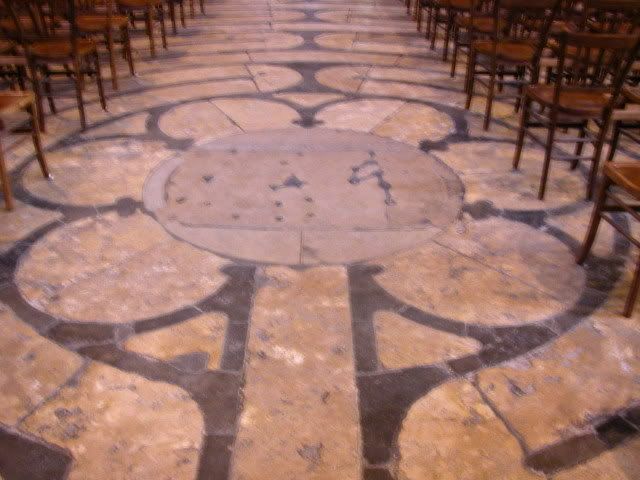
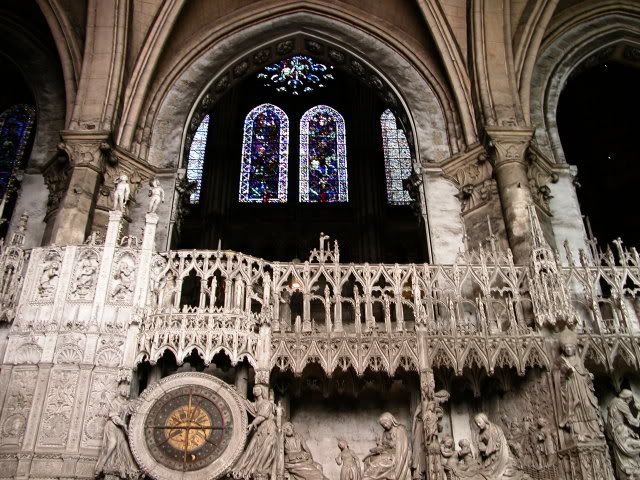
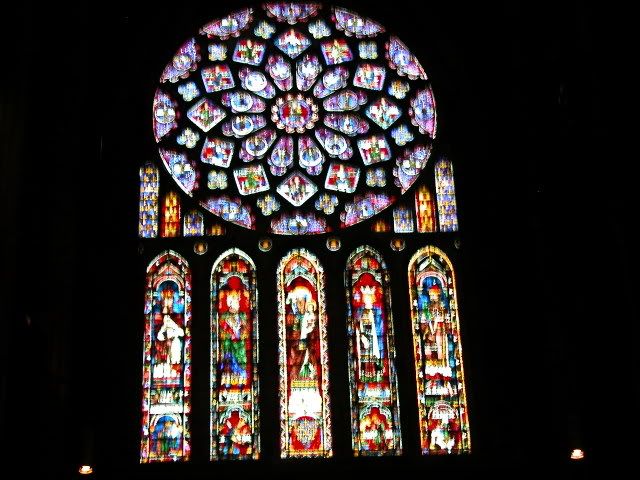
Last but not least, I decided to take the daily tour of the crypt where some interesting finds continue to be unearthed in this century. Our group descended a flight of 18th century steps and into the crypt that was built in 858 after the Viking attack. Here we viewed the remains of a 6th century Gallo Roman column, and the floor paving of the 4th century cathedral. Several years ago, beyond the column mentioned above, an archaeologist uncovered the foundations of the Carolingian cathedral and its entry. Our next stop was a Gallic well, 34 meters deep with a square base (unique to the Gallic tradition). Known as the "Saint's Well" in memory of the martyr Saint Modest, it is also remembered for the victims of Viking attacks, supposedly thrown to their deaths at the bottom. Moving on, we saw the other piece of the Mary relic, an early frescoe of the Adoration of the Magi that was uncovered only thirty years ago, and finally the "Statue of Our Lady". This sculpture is unique for being one among only two others known to exist of Mary with her eyes closed. This is usually interpreted as a sign of reverence.
My apologies for the poor image quality of the Statue of Our Lady; I scanned a prayer card since I ran out of film by the time I reached her in the crypt at the end of the day. She is seated behind a traditional Aubusson tapestry, and is constructed of wood.
As Emile Male once said, "Nothing compares to Chartres. It is the thinking of the Middle Ages made visible".


1 comment:
Thanks for visiting my blog! Where in Japan will you be? Have you been here before? (It seems like it from your first post.)
I was so excited to see Chartres on your blog. I loved it when I visited on my very short trip to France and Italy in high school.
I'll be excited to see what you post next. Your experience in the village school was heartwarming.
Post a Comment